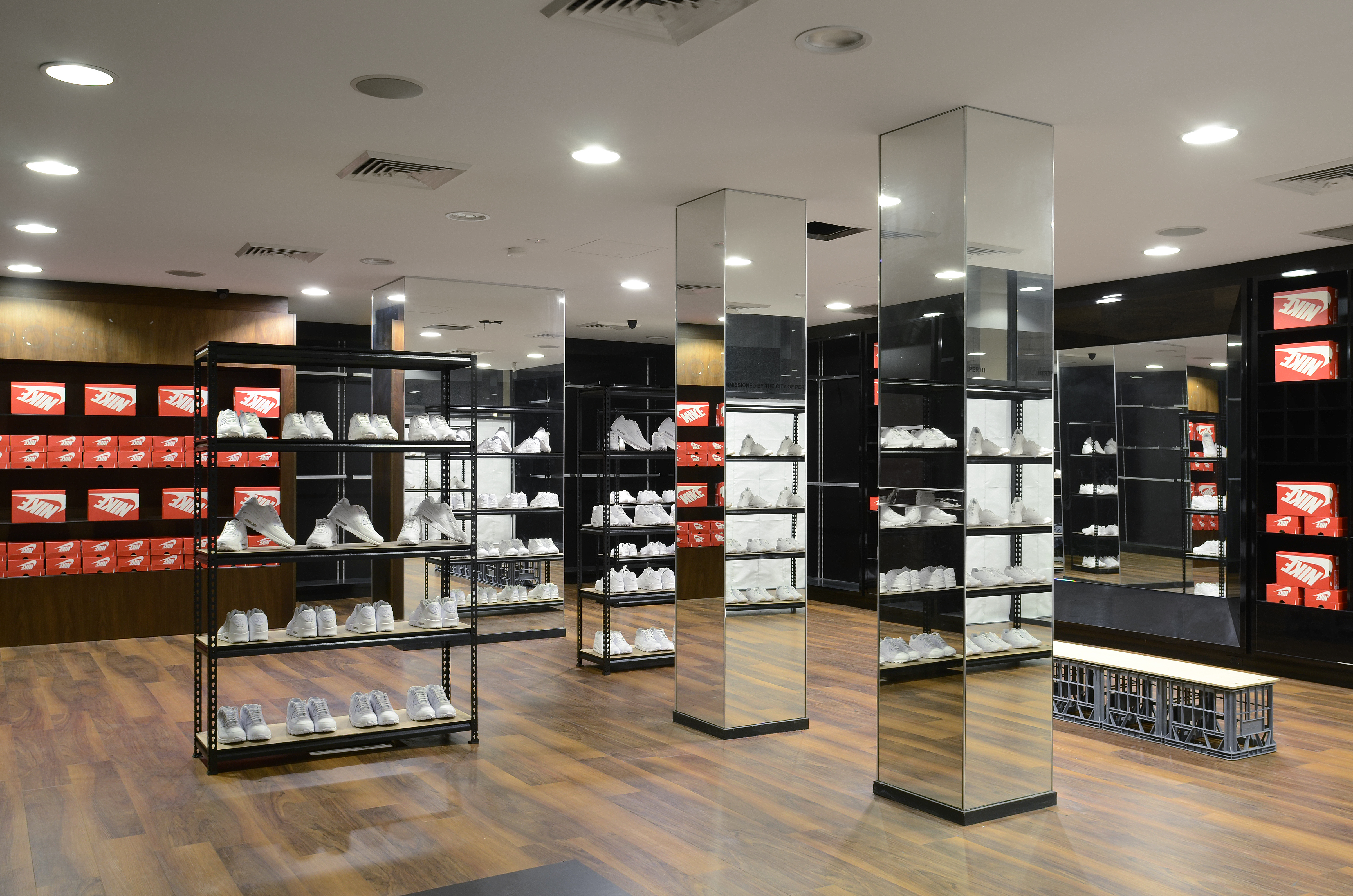
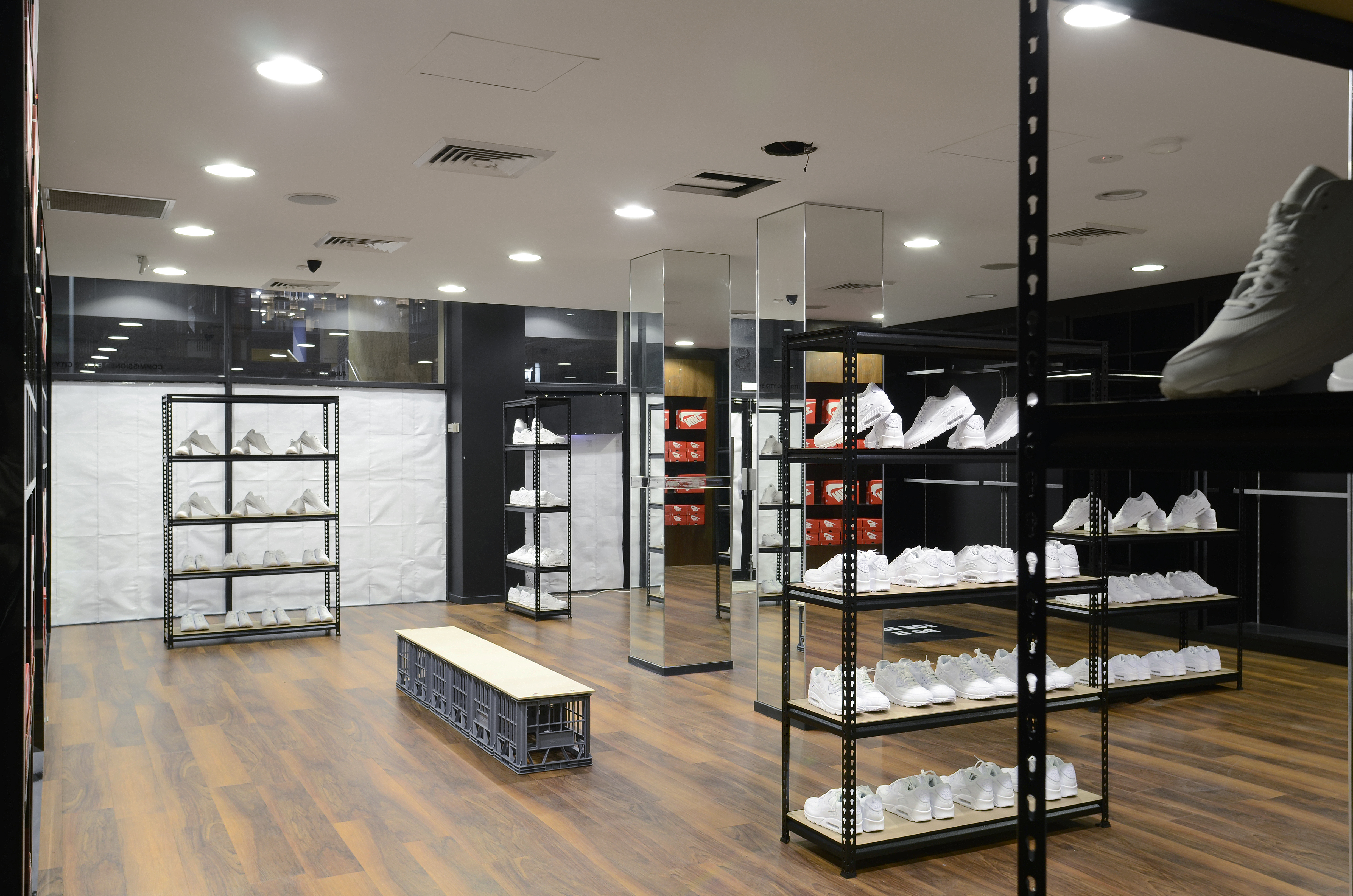
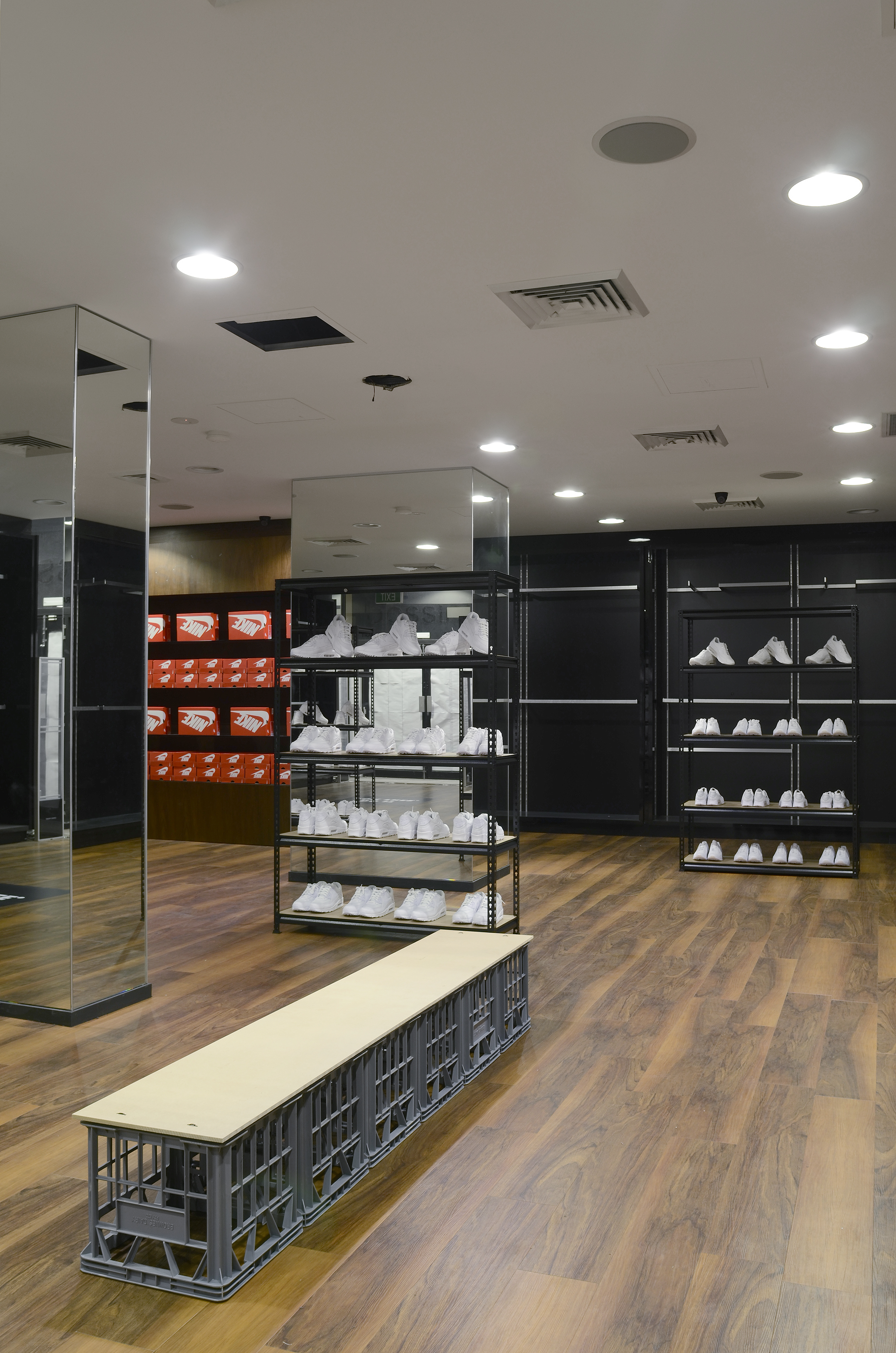
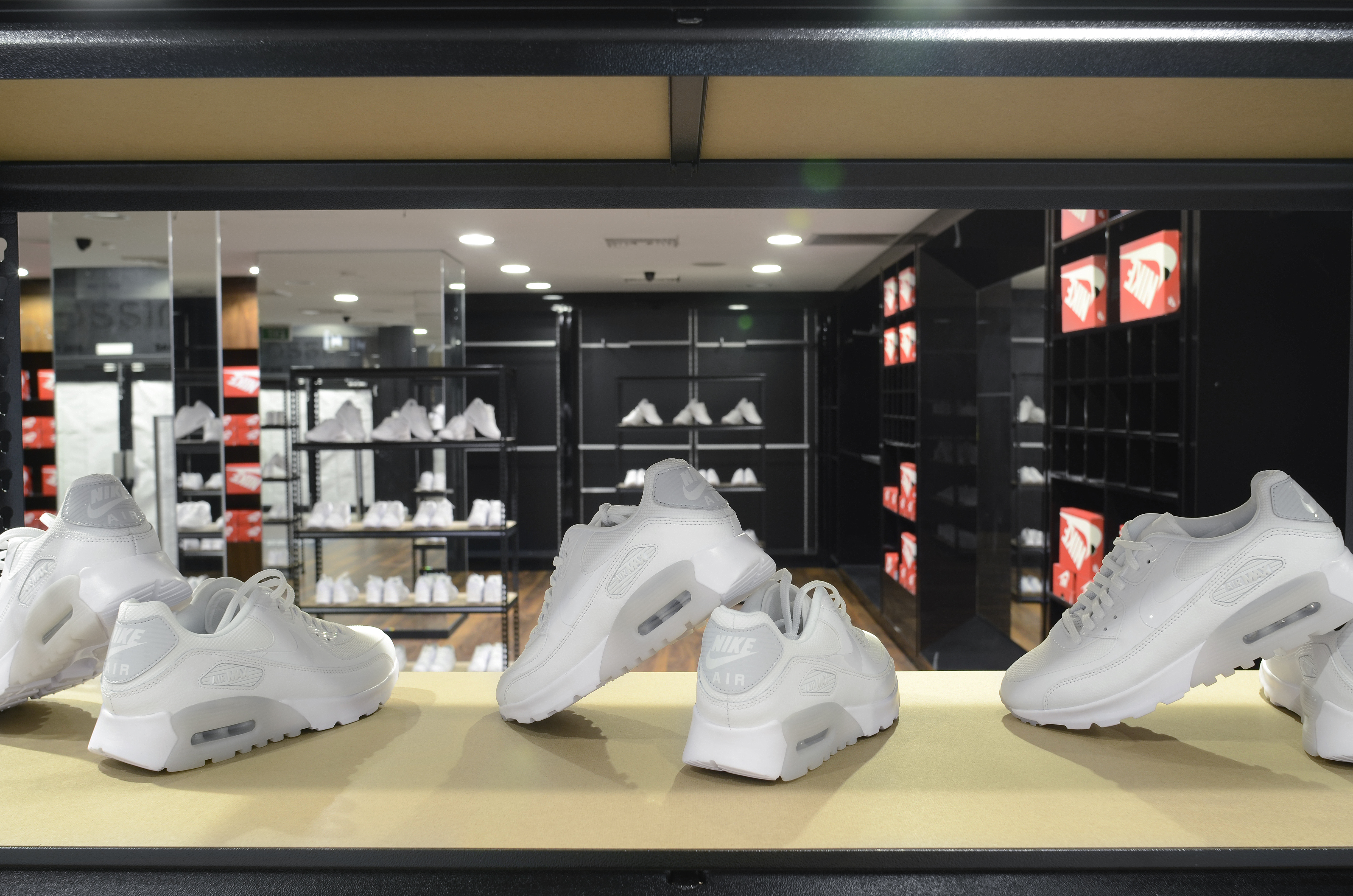
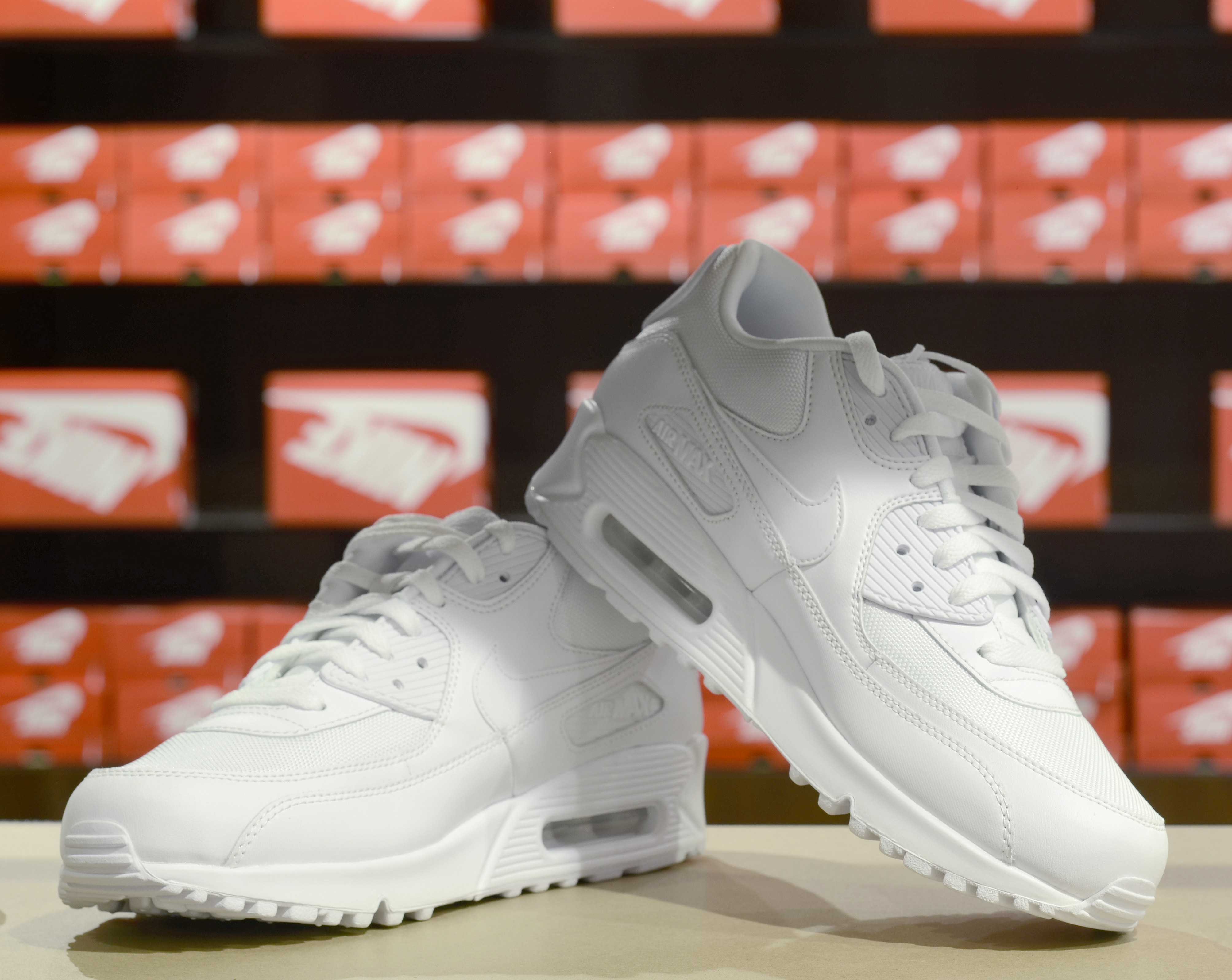
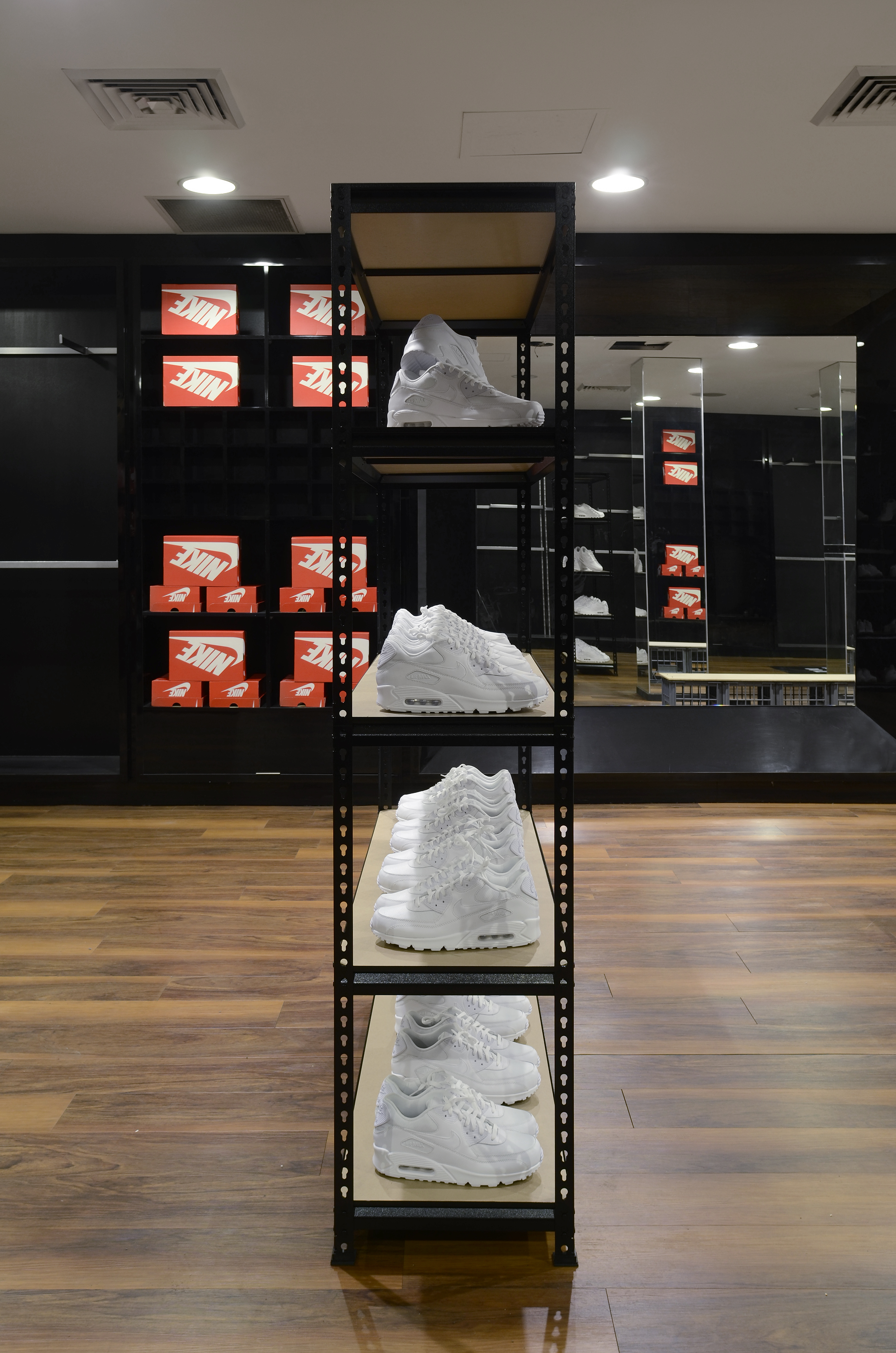
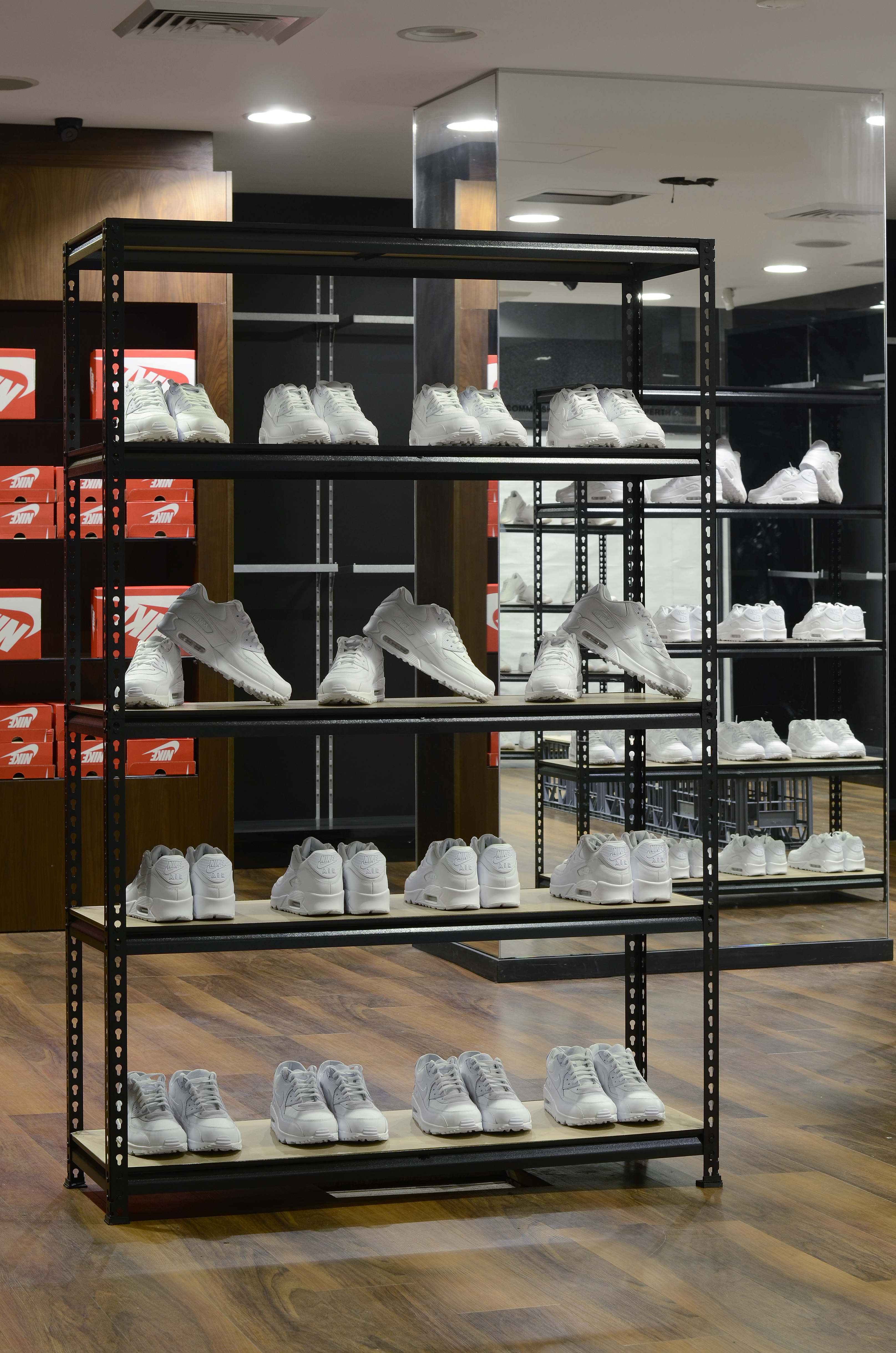

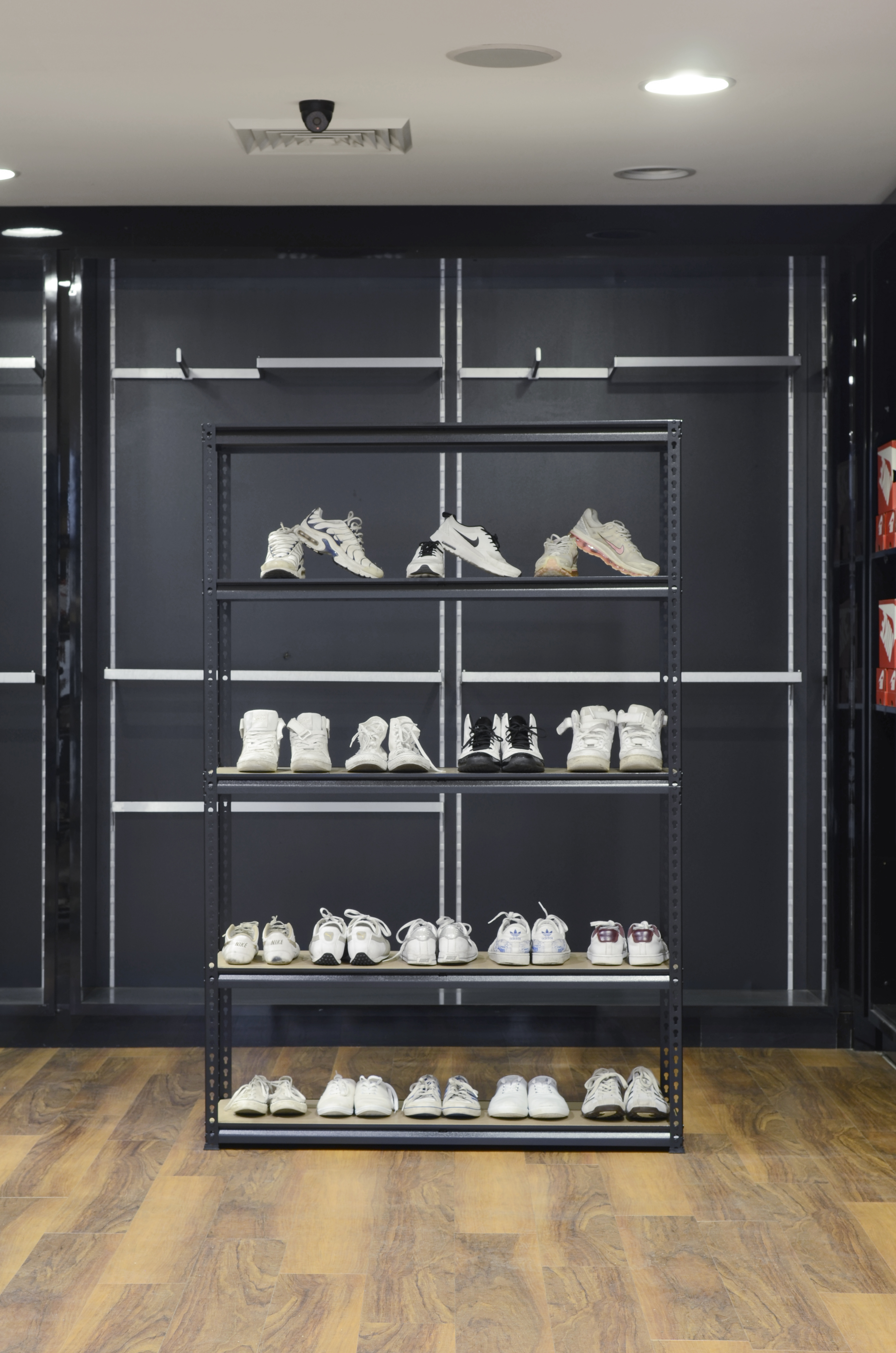
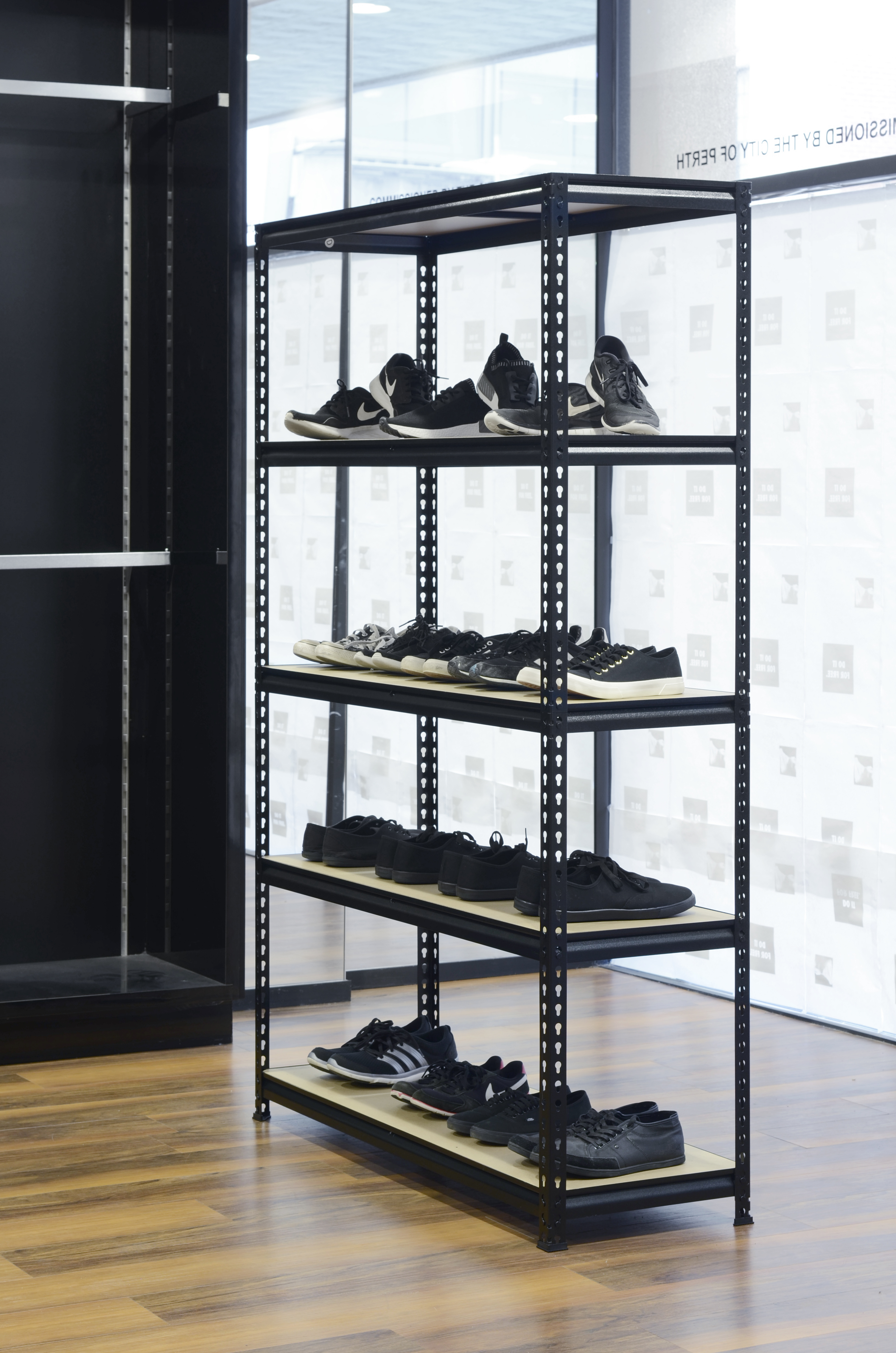
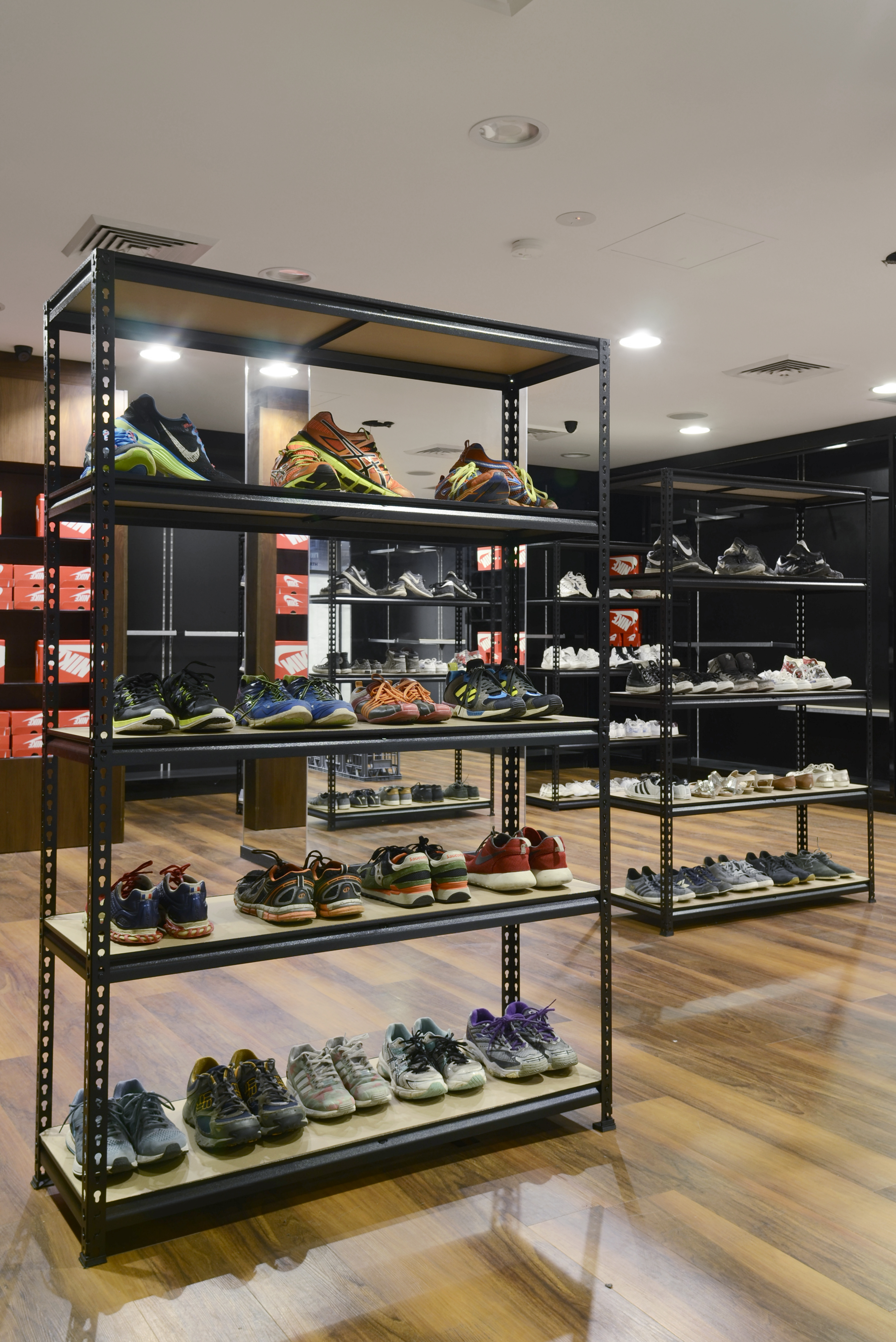



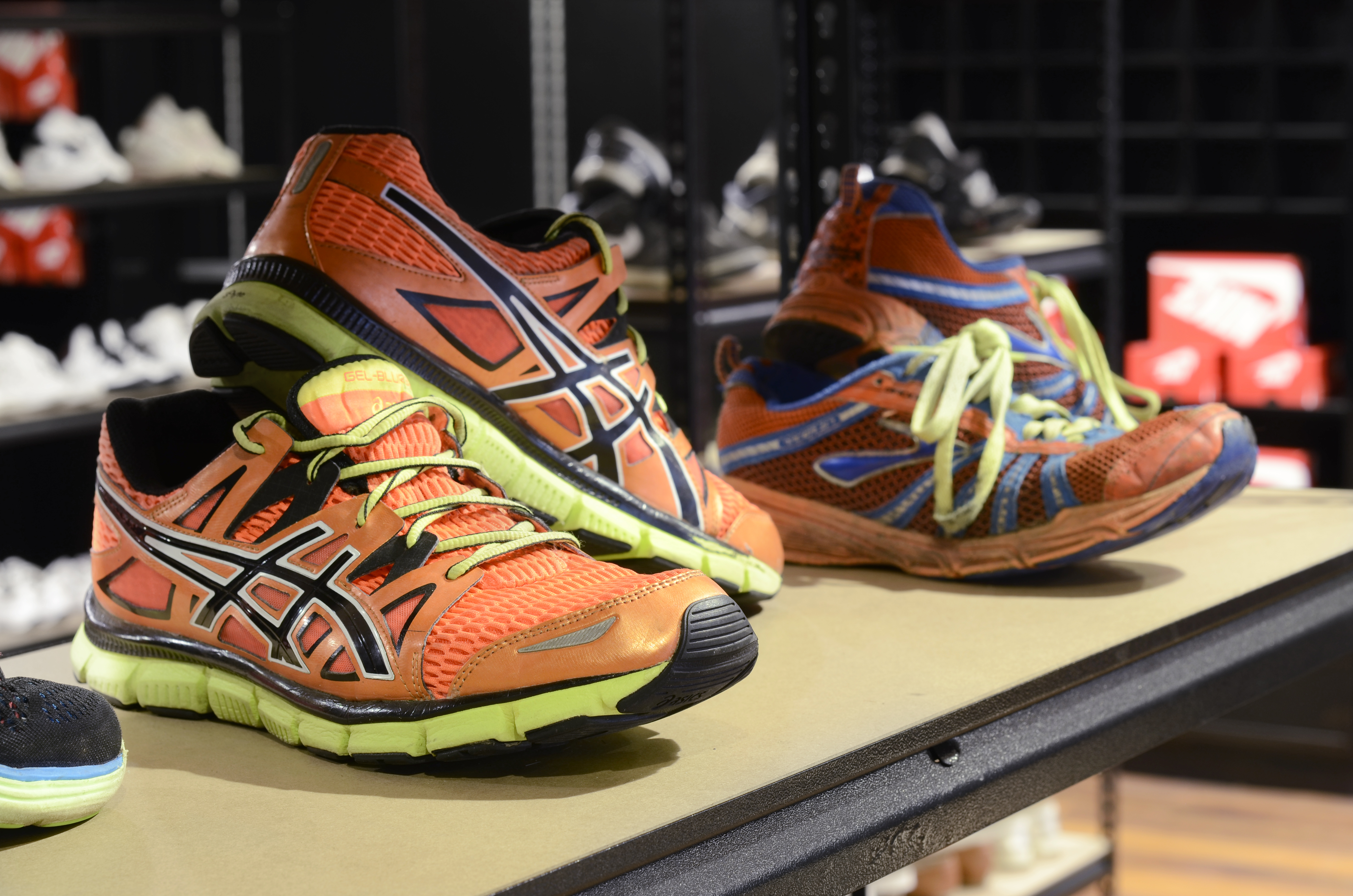
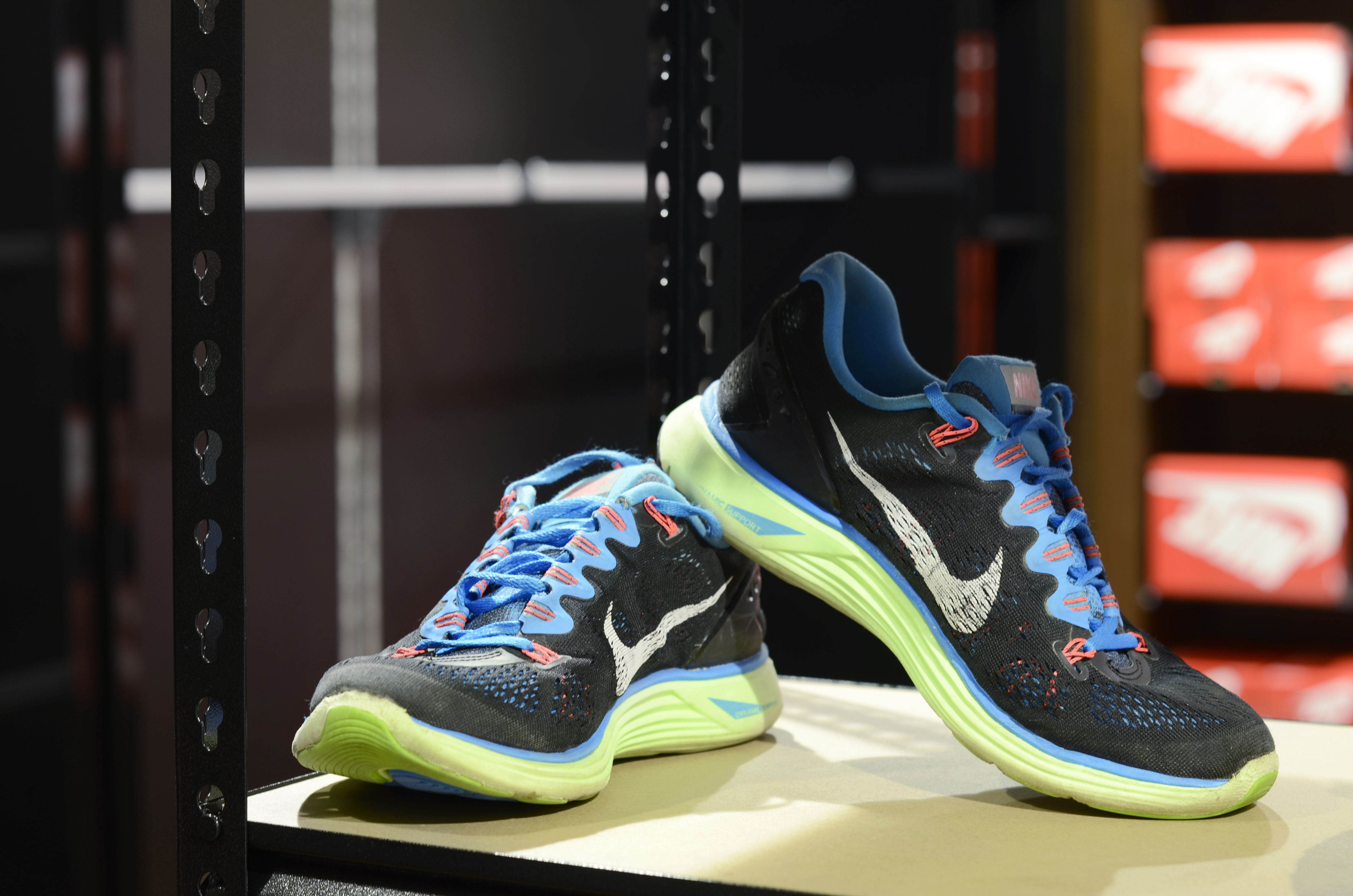
Do It For Free
2016
Temporary public artwork in the form of a shoe exchange
Environmental dimensions
Commissioned by the City of Perth TRANSART Program
Photo: Dan McCabe
Do It For Free was a public artwork that took the form of a shoe exchange. One hundred pairs of white Nike Air Max 90s (internationally the most shoplifted shoe) were given away to one hundred members of the public in exchange for the shoes on their feet. The second hand shoes were donated to Homeless Connect Perth.
The role of public art is often to memorialise or embody some figure or ideal that is seen to be synonymous with the values of a community. Even abstract or largely formal public artworks can be read as having such a function, since even the most puzzling piece of modern art can work to embody a “modern” or “cosmopolitan” sense. Indeed, much public art today seems to be about precisely instilling in the viewer the sense that they live and work in a modern city, and that, accordingly, by being in proximity to such emblems of modernity they aren’t missing out on anything (stuff that might be going on in Melbourne or Sydney, for example).
However, one of the issues with speaking about such “community values” is the risk posed by their concreteness. The fact that we can recognise shared community values—a shared sense of freedom or modernness, for example—can render obscure those excluded by such an act of sharing. Public art can often do this, insofar as it both opens up public space—giving it a meaning, and a meaning that is shared by the community—whilst closing it to anyone that might challenge the way such space has been framed.
The question that Do It For Free poses relates precisely to this problem of how we are to approach those members of our community that are included only in the manner by which they are left out or not counted. Let’s face it, for some members of the community a pair of Nike trainers is more meaningful and authentic than the middle-class game of expensive education, property ownership, and full-time work. Furthermore, and from the reverse perspective, Nike clothing—especially trainers—have come to stand as an emblem of a certain anti-social youth culture. The Nike Air-Max 95 is often described as the shoe most worn by criminals in the UK. During the London Riots, consumer goods like Nike clothing was targeted specifically by rioters desperate for the insignia of authenticity. In the aftermath of the London riots, the Guardian quoted a fifteen year old that had been arrested. She stated that, "people with the Ralph, the Gucci, the Nike, the trainers, the Air Forces [Nike Air Force 1 trainers], it's all the style, just everyone wants it. If you don't have it you're just going to look like an idiot. Like, that's how we see it, you just look like an idiot. It's a fashion thing.” For many people, being seen in public wearing these brands, and therefore having some stake in public space, is part of forming an identity as someone authentically opposed to the conventional modes of cultivation that are offered through civil-society, with its emphasis on work-readiness, professionalism, and self-control.
How should community art address such people? The kind of people, to paraphrase and modify the words of the artist Mark Leckey, for whom “something as trite and throwaway and exploitative as a shoe manufacturer can be taken up and made into something totemic, and powerful, and life-affirming.” There’s the rub, the values of shoe manufacturers and conspicuous consumption are exploitative and throwaway, but so are the values of bourgeoise individualism that are embodied in public works that function as odes to the freedom, openness, and possibilities of the modern city. Should the artist “correct” the views of those engaged in consumer youth culture, so as to educate them about the possibilities offered by an entrepreneurial outlook that finds authenticity in a different range of luxury goods? Wouldn’t this be tantamount to maintaining the moralistic myth that there are “good” kinds of consumption, as opposed to the lazy “bad” fetishisation of Nike and similar consumer brands?
Do It For Free, rather than attempting to educate the masses, or to revel in the joys of commodity culture, attempts to pose the question—and I think it is just a question, not necessarily a solution in the form of an aesthetic intervention—of what it would mean to include those so many excluded groups that are kept at arms- length by the dominant values that most of us take to be inseparable from the idea of community itself.
Francis Russell